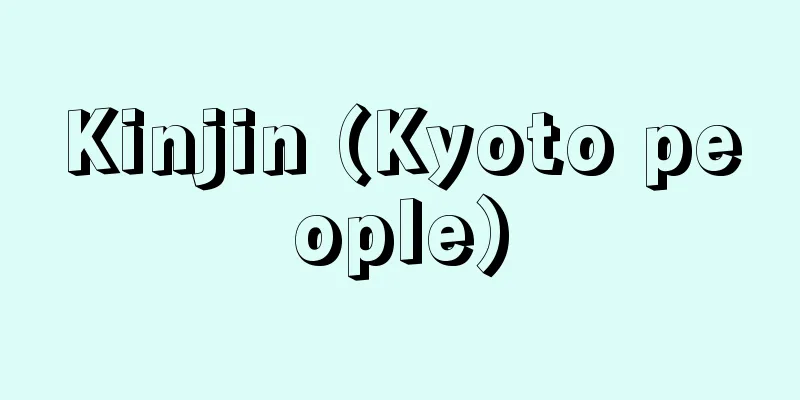Katai Tayama

|
Novelist. Born on December 13, 1871 in Tatebayashi, Gunma Prefecture. His real name was Rokuya. His father, Shojuro, a samurai of the former Tatebayashi domain, became a police officer in the Metropolitan Police Department in 1874 (Meiji 7) and moved to Tokyo. In 1876, Hanagata came to live with his father accompanied by his mother, but the following year his father was killed in battle during the Seinan War, and Hanagata and his mother returned to Tatebayashi. In 1881, in order to help support the family, he became an apprentice at the Yurindo Bookstore in Minami Tenmacho, Kyobashi, Tokyo, halfway through his elementary school studies. However, something went wrong the following year, and he returned to Tatebayashi and resumed school. He also studied Chinese poetry and prose at Yoshida Rouken's Kyūkyūsōdō, and submitted waka and Chinese poems to the Eisai Shinshi. In 1886, his elder brother Miyato was employed at the History Compilation Bureau, so he and his family moved to Tomihisa-cho, Ushigome, Tokyo. He studied English with Nojima Kinpachi, a member of the same clan who was attending Daigaku Yobimon (the predecessor of the University of Tokyo), and came into contact with Western literature. Around 1889, he joined the Koyo-kai group led by Matsuura Shuhei (Matsuura Tatsuo), where he formally studied waka poetry and came to know Matsuoka Kunio (Yanagita Kunio). It was around this time that he gave up on aspirations of becoming a soldier or politician, and decided to pursue literature instead. In 1891, he visited Ozaki Koyo, and was directly tutored by Emi Suiin, publishing works such as "Uribatake" in "Senshimankou" (Citrus Field). In 1894, he became acquainted with Bungakukai and became acquainted with Shimazaki Toson. In 1896, he became acquainted with Kunikida Doppo, and the following year, in 1897, he published a collection of poems, "Jojoshi" (Lyric Poems), co-authored with Doppo and others, through Minyusha. His travel writings, "Nansen Hokuba" (South Ships, North Horses) (1899), which he wrote in search of emotional solace through travel due to his poverty, were recognized by Ohashi Otowa of Hakubunkan, and he joined Hakubunkan in 1899 and married Lisa, the younger sister of his fellow poet, Ota Gyokumei. In 1900 (Meiji 33), he joined the editorial staff of the weekly Taiheiyo, studying and introducing foreign literature such as that of Zola and Flaubert, publishing The End of Juemon in 1902 and Explicit Description in 1904. Combined with his service in the Russo-Japanese War, he established a style of "flat description" with a bystander attitude. In 1906, he became the chief editor of the Bunsho Sekai, and in 1907, he wrote Futon, establishing the position of naturalist literature. He wrote a succession of full-length novels, Life (1908), Wife (1908-09), and En (1910), and in 1909, he wrote and published Country Teacher, which captured people's hearts as a masterpiece. He left Hakubunkan in 1912, wrote "One Inn of Life," and saw off Toson on his trip to France the following year. This was a turning point for him, and he retreated to Nikko and other places, turning his attention from the French writer Huysmans to Buddhism. He produced ambitious works such as "Time Passes By" (1916) and "The Execution of a Private Soldier" (1917), while also depicting a world of resignation in "Remaining Snow" (1918). In 1920 (Taisho 9), a celebration was held to celebrate the 50th anniversary of the birth of Hanagai and Shusei, and from around the time that "Bunsetsu Sekai" ceased publication, he projected himself into historical novels such as "Minamoto no Yoshitomo" (1924), and wrote "Kami" (1912), which explored the sexual desires of men and women with a focus on courtesans, through to the long novel "Momoyo" (1927), before dying of laryngeal cancer on May 13, 1930 (Showa 5). [Ichiro Kobayashi] The Complete Works of Katai, 17 volumes (1973-74, Bunsendo) ▽ The Literature of Tayama Katai, 2 volumes by Yanagita Izumi (1957, 1958, Shunjusha) ▽ The Possibilities of Fiction in Naturalistic Literature, by Iwanaga Tsutomu (1968, Ohfusha) ▽ Supplement to Tayama Katai, by Kobayashi Ichiro (1969, Sokensha) ▽ Studies on Tayama Katai, 10 volumes by Kobayashi Ichiro (1976-84, Ohfusha) [Reference] | |©Shogakukan Library "> Tayama Katai Source: Shogakukan Encyclopedia Nipponica About Encyclopedia Nipponica Information | Legend |
|
小説家。明治4年12月13日、群馬県館林(たてばやし)に生まれる。本名は録弥(ろくや)。旧館林藩士の父鋿十郎(しょうじゅうろう)は1874年(明治7)警視庁巡査となり上京、花袋は1876年母に連れられ父の許にきたが、翌年、父は西南戦争に従軍して戦死、花袋と母たちは館林に帰る。1881年家計を助けるために、小学校の学業なかばで東京・京橋南伝馬町の有隣堂書店の丁稚(でっち)となったが、翌年不都合なことをおこして、館林に帰り復学、かたわら吉田陋軒(ろうけん)の休々草堂で漢詩文を学び、『穎才新誌(えいさいしんし)』に、和歌や漢詩を投稿した。1886年、兄実弥登(みやと)が修史局に勤めたので一家をあげて東京・牛込(うしごめ)富久(とみひさ)町に住む。大学予備門(東京大学の前身)に通う同藩の野島金八郎に英語を学び、西洋文学に触れる。1889年ごろより松浦萩坪(しゅうへい)(松浦辰男)の「紅葉会」に入り、和歌を正式に学び松岡国男(柳田国男(やなぎたくにお))を知る。このころから、軍人や政治家志望をやめ、文学に進むことを決意する。 1891年尾崎紅葉(こうよう)を訪問、直接には江見水蔭(えみすいいん)の指導を受け『千紫万紅』に『瓜畑(うりばたけ)』などを発表、1894年『文学界』に近づき、島崎藤村と交わる。1896年国木田独歩を知り、翌1897年民友社より独歩らとの共著で詩集『抒情詩(じょじょうし)』を出版する。貧窮のため心の慰藉(いしゃ)を旅に求めて書いた紀行文集『南船北馬』(1899)が博文館の大橋乙羽(おとわ)に認められ、1899年博文館に入社、詩友太田玉茗(ぎょくめい)の妹リサと結婚。1900年(明治33)より週刊『太平洋』の編集に加わり、ゾラ、フロベールらの外国文学を研究して紹介、1902年『重右衛門の最後』、1904年『露骨なる描写』を発表、日露戦争従軍と相まって傍観者態度による「平面描写」を確立した。1906年『文章世界』の主筆となり、1907年『蒲団(ふとん)』を書き、自然主義文学の地位を築いた。『生』(1908)、『妻』(1908~09)、『縁』(1910)の長編を次々と創作、1909年に書き下ろしで刊行した『田舎(いなか)教師』は名作として人々の心をとらえた。1912年博文館を退社、『人生の一宿駅』を書き、翌年藤村の渡仏を見送ったころから大きな転機を迎え、日光などにこもり、フランスの作家ユイスマンスから仏教へと心を移し、『時は過ぎゆく』(1916)、『一兵卒の銃殺』(1917)など意欲的な仕事をしながら『残雪』(1918)などに諦念(ていねん)の世界を描いた。1920年(大正9)花袋・秋声生誕50年の会が催され、『文章世界』終刊のころから、『源義朝(よしとも)』(1924)などの歴史小説に自己を投影し、愛妓(あいぎ)を中心にして男女の愛欲を問題にした『髪』(1912)から長編『百夜(ももよ)』(1927)を書き、1930年(昭和5)5月13日喉頭癌(こうとうがん)で没した。 [小林一郎] 『『花袋全集』全17巻(1973~74・文泉堂)』▽『柳田泉著『田山花袋の文学』2巻(1957、58・春秋社)』▽『岩永胖著『自然主義文学に於ける虚構の可能性』(1968・桜楓社)』▽『小林一郎著『増補 田山花袋』(1969・創研社)』▽『小林一郎著『田山花袋研究』全10巻(1976~84・桜楓社)』 [参照項目] | |©小学館ライブラリー"> 田山花袋 出典 小学館 日本大百科全書(ニッポニカ)日本大百科全書(ニッポニカ)について 情報 | 凡例 |
>>: Dāyabhāga School - Dāyabhāga School
Recommend
Blue cap - Blue cap
...25 species are distributed in Central and Sout...
Sarunashi - Monkey
A deciduous vine of the Actinidiaceae family (APG...
Aromanian - Aromanian
...In the former Soviet Union, the language of th...
Karel Hynek Mácha
Czechoslovakian poet. Although he grew up in a po...
King Beopheung (English: Pǒphǔng-wang)
[raw]? [Died] King Beopheung 27 (540) The 23rd kin...
Monkey-cheek shell - Scapharca subcrenata
An edible bivalve of the family Arcidae. The shell...
Composite order
…Of course, these were not completely fixed, and ...
Economics
In a broad sense, it is a social science disciplin...
Fire and Thunder God - Honoikazuchi no Kami
A god who appears in the Kojiki and Nihon Shoki. O...
Minpen - Minpen
This refers to urban riots that occurred in China...
Gerbrand Adriaenszoon Bredero
1585‐1618 Dutch poet and comic playwright. Born in...
Energy problem - energy problem
Since there is a very strong correlation between e...
Ichigami Festival - Ichigami Festival
〘Noun〙 A festival for the city gods that is held a...
One prefecture, one newspaper system
...Control over speech and publishing was also st...
New Kabuki - Shinkabuki
A genre within the classification of Kabuki Kyoge...









